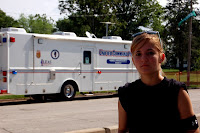 This is that difficult time of the year when there are so many distractions, homeschooling can be difficult. While you strive all year to maintain a schedule and some structure in your homeschooling efforts, days get shorter as decorating, visits from friends, Christmas pageants, church events and relatives seem to have no respect for that schedule you have worked so hard to maintain.
This is that difficult time of the year when there are so many distractions, homeschooling can be difficult. While you strive all year to maintain a schedule and some structure in your homeschooling efforts, days get shorter as decorating, visits from friends, Christmas pageants, church events and relatives seem to have no respect for that schedule you have worked so hard to maintain.
This Christmas season, a great project and experience for your homeschoolers may be to turn them into the Christmas Safety Police. First, let’s start with the art project…
Have the kids make badges for themselves using Christmas shapes cut out of construction paper. Using markers, crayon or even glitter (glitter is ALWAYS a sign of authority), each child should design a badge for themselves that in no uncertain terms says they are in charge of a safe Christmas.
Now that that is over, they need to go to school in order to be deputized.
Assist the children in researching Christmas safety tips for the home. I will be posting some below, but you can get online and find myriads of sources on kid-safe websites. Have each child prepare a report on Christmas safety tips and then let’s go back to the art room…
We are going to need some laws if we are going to be the Safety Police; after all, you can’t arrest somebody for breaking a law that does not exist! Each child should make a poster to be hung somewhere in the home with the “Christmas Safety Laws” such as Do not leave the Christmas lights on overnight.
Once the posters are in place and the “laws” are written, the children are in charge. This job is going to involve daily inspections that include making sure that lights are turned off before bedtime, that large icicles have not formed over doorways, that nobody piles gifts over extension cords, that the tree is watered daily, etc.
Have fun with it! Perhaps they should make tickets they can give to violators?
During the season of interruptions, this may be a great way to fill those odd moments during the holidays by sending the kids off on an inspection. Wanna take it a bit further? Perhaps a letter from your new police force to your relatives and friends on Christmas safety should be stuffed in this year’s Christmas card envelopes…
Each year, Christmas tree fires destroy homes across the country. The leading cause of Christmas tree fires and property damage was short circuit or poor wiring such as overloaded extension cords.
According to the National Fire Protection Association (NFPA), cords and plugs were the leading type of equipment involved in the ignition of Christmas trees.
Safety points to remember:
- Any string of lights with worn, frayed or broken cords or loose bulb connections should not be used.
- Always unplug Christmas tree lights before leaving home or going to sleep.
- Never use lit candles to decorate a tree, and place them well away from tree branches.
- Try to keep live trees as moist as possible by giving them plenty of water daily. Do not purchase a tree that is dry or dropping needles.
- Choose a sturdy tree stand designed not to tip over.
- When purchasing an artificial tree, be sure it is labeled as fire-retardant.
- Make sure the tree is at least three feet (one meter) away from any heat source and try to position it near an outlet so that cords are not running long distances.
- Do not place the tree where it may block exits.
- Safely dispose of the tree when it begins dropping needles. Dried-out trees are highly flammable and should not be left in a house or garage, or placed against the house.
Holiday Fire Safety
The winter holidays are a time for celebration, and that means more cooking, home decorating, entertaining, and an increased risk of fire due to heating equipment.
- Unattended cooking is the leading cause of home fires in the U.S. When cooking for holiday visitors, remember to keep an eye on the range.
- Provide plenty of large, deep ashtrays for guests who smoke and check them frequently. Cigarette butts can smolder in the trash and cause a fire, so completely douse cigarette butts with water before discarding.
- After a party, always check on, between and under upholstery and cushions and inside trashcans for cigarette butts that may be smoldering.
- Keep matches and lighters up high, out of sight and reach of children (preferably in a locked cabinet). When smokers visit your home, ask that they keep smoking materials with them.
Candle Fire Safety
December is the peak month for candle fires, with nearly twice the average number of incidents.
44% of reported candle fires in the home started in the bedroom.
Safety points to remember:
- Extinguish all candles when leaving the room or going to sleep.
- Keep candles away from items that can catch fire.
- Use candleholders that are sturdy, won't tip over easily, are made from a material that can't burn and are large enough to collect dripping wax.
- Don't place lit candles in windows, where blinds and curtains can close over them.
- Place candleholders on a sturdy, uncluttered surface and do not use candles in places where they could be knocked over by children or pets.
- Keep candles and all open flames away from flammable liquids.
- Keep candlewicks trimmed to one-quarter inch and extinguish taper and pillar candles when they get to within two inches of the holder or decorative material. Votives and containers should be extinguished before the last half-inch of wax starts to melt.
- Avoid candles with combustible items embedded in them.
For more ideas on Fire Safety or Holiday Safety, search the net or watch for tips on our Chasing4Life FaceBook Page this season! We’ll be posting ‘em!










